Notes
Paris Earth Summit: Visual Activism Rises to the Climate
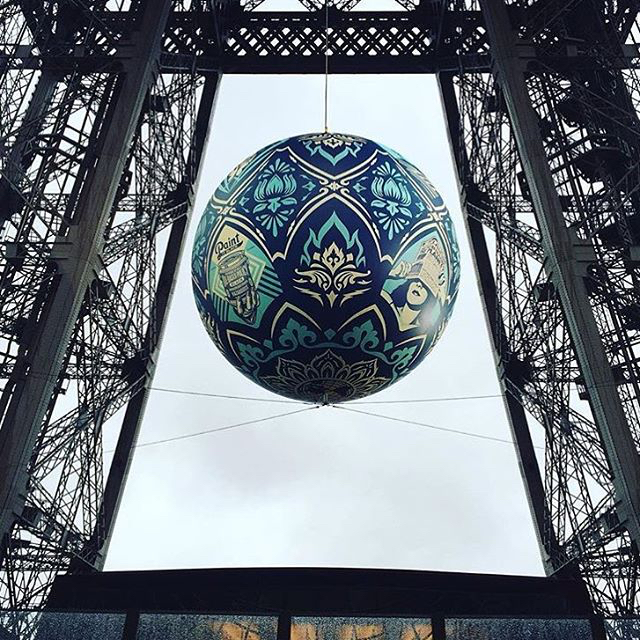
The tendency, it seems, is to see every crisis as momentous and unprecedented. One could argue, though, that the climate crisis is the end-all. And with the COP21 Paris climate conference on the planetary emergency following immediately on the heels of a vicious terror attack there, these are no ordinary times. Of course, the occasion of the summit could not be more elevated for activists, visual and otherwise.
I thought the two ton “Earth Crisis Globe” designed by Shepard Fairey and suspended from the Eiffel Tower last week was spectacular as an object, even if I wasn’t in love with the graphics. The terror attacks, however, gave the object a whole new meaning and complexity.
Yes, the exotic object captured the world hanging in the balance. Emotionally though, the object also grounded and created a stable anchor to Paris’ most cherished symbol — and prime terror target — in this moment of instability. With so much anger and tension in the air over Muslim extremism, however, not to mention the ongoing refugee crisis, that the sphere was inspired by the mandala suddenly turned the tower — framed in this opening like a portal — into an east-west gateway.
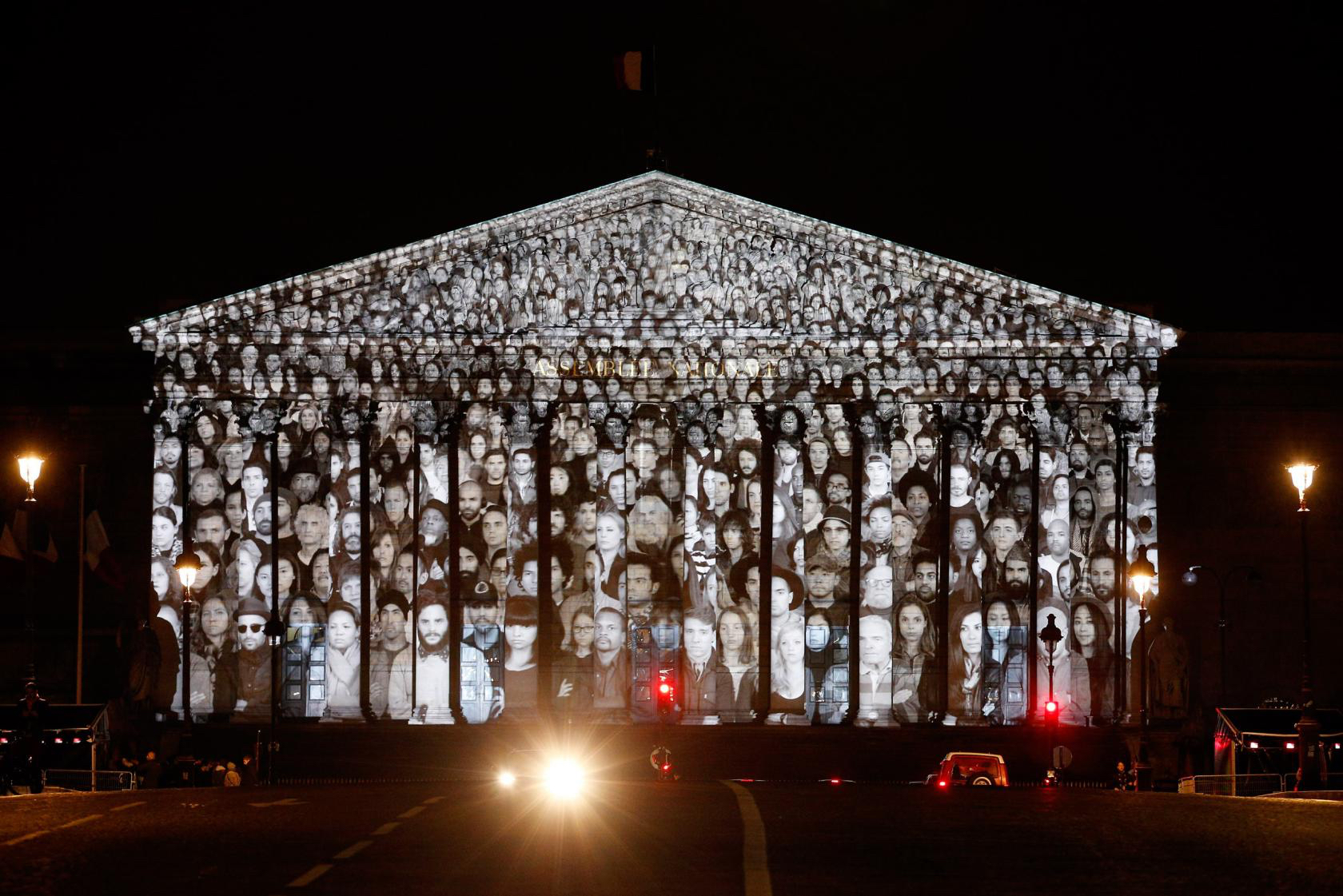
After his murals of immigrants in NY City in collaboration with the the NY Times, JR’s institutional access is scaling up.
Like the Fairey project, the eloquence of his projection onto the French National Assembly at the start of the climate conference, was also enhanced by unintended circumstances. The nature and urgency of the work was immediately amplified by the post-attack restrictions against public marches and demonstrations. Seeing the populace embodying/occupying the seat of government and demanding climate accountability was intimidating enough. In light of the security crackdown, it also stood for the French citizens — of all faiths and ethnicities — standing up and coming forward anyway. There’s climate and then there’s climate.
When it comes to visual activism, too, there’s always the question how much these works of conscience are actually consumed by those in power. In this case, I can easily imagine both French and world leaders encountering this and taking pause from inside the bubble.
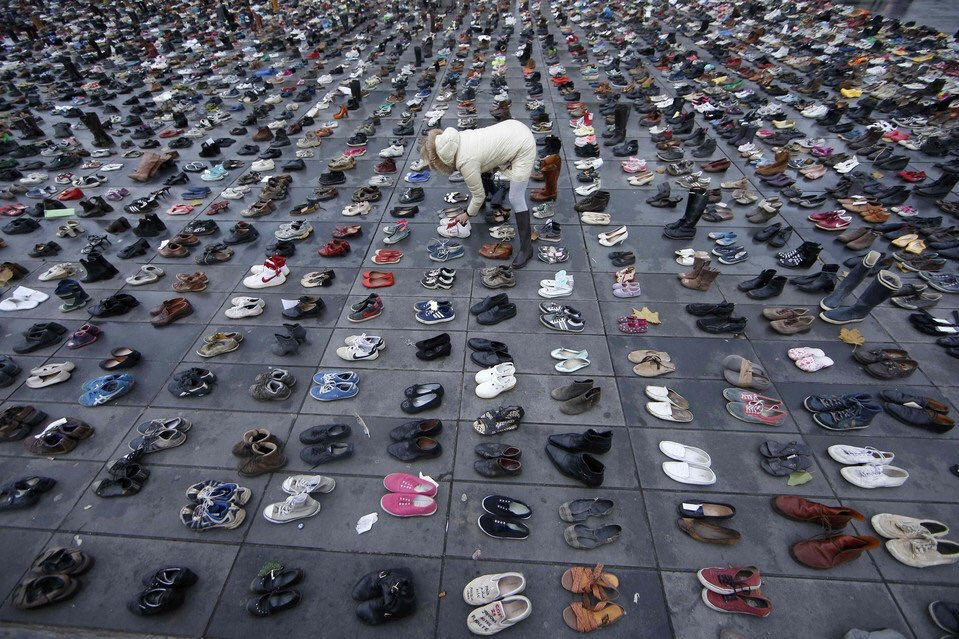
As opposed to the projects above, the field of shoes displayed at the Place de Republique was an explicit response to the French crackdown. The square, representing the values of the Republic, was to be the site of a massive climate change demonstration. Instead, the placement of over 20,000 shoes (the site also the starting point for 10,000 Parisians forming a stationary, and visually-moving human chain), like the JR projection, represented an eloquent virtual march.
The display, though, was not just an affirmation of public power in the face of the security state, or an act of witnessing as the world’s power elite tackled the fate of the planet. The fact the sea of shoes also included those of the UN’s Ban Ki-Moon as well as The Pope aspired, at least, to level the incomparable power difference between the deciders and the masses.
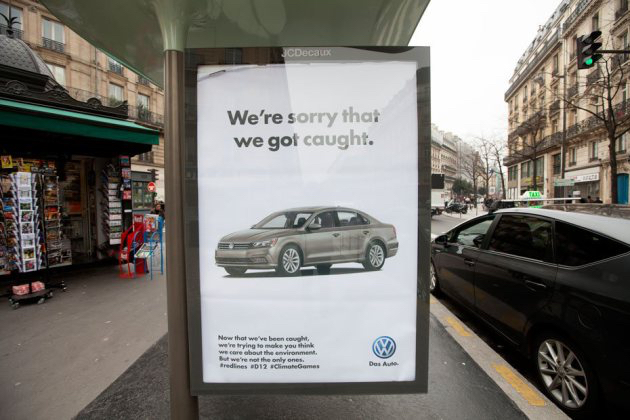
Finally, because advertising is the true opiate of the commercial state, and the climate crisis, as well as the climate conference, is so intertwined with industry, the group “Brandalism” marked the Black Friday “shopping holiday” by “repurposing” 600 ad in Paris. 80 artists from 10 countries participated. Here’s a link to the full set of subversive ads, and you might also survey this list of the (real) conference sponsors.
Certainly not as eloquent, collaborative or law abiding as the projects above, this action strikes at the heart of an insidious reality: if the climate crisis requires a strictly for-profit solution, the world and its citizens will surely be messaged into extinction.
(photo 1: obeygiant.com. photo 2: Yoan Valet—EPA. caption: An artwork by French artist JR and U.S. filmmaker Darren Aronofsky is projected onto the French National Assembly building on the eve of the COP21 climate conference in Paris on Nov. 29 2015. photo 3: Ian Bremmer. photo 4: Brandalism. Artwork by Barnbrook 2015.)
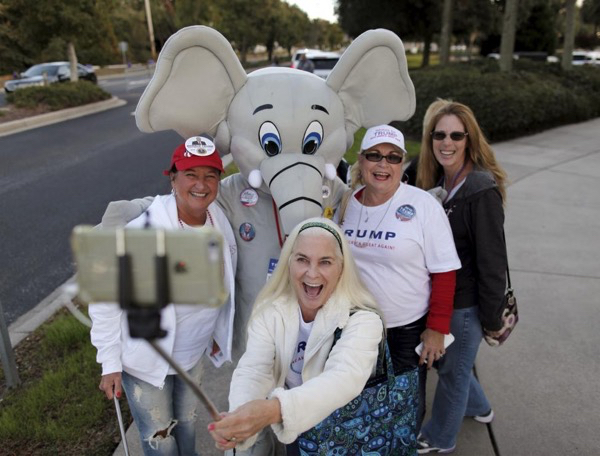
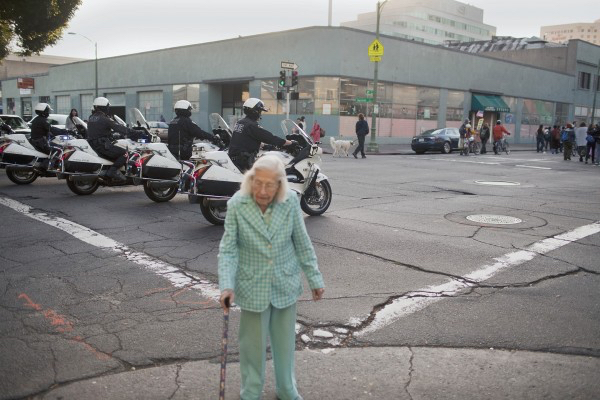
Reactions
Comments Powered by Disqus